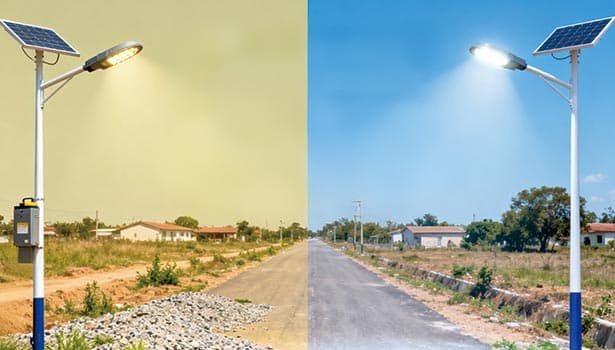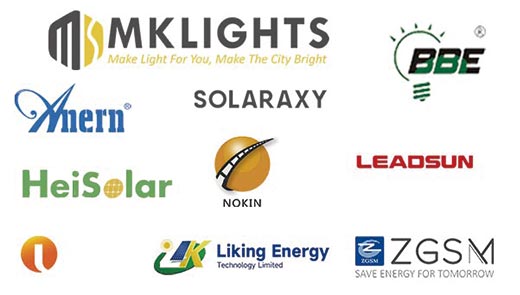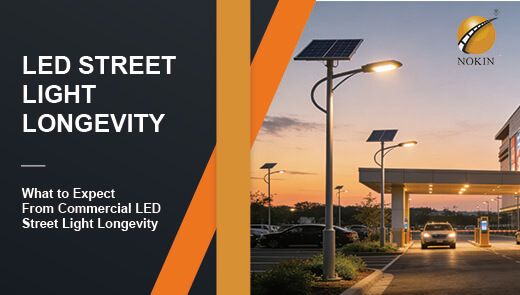How to Select A Solar Street Light Under Low-Budget?
Against the backdrop of a rising global demand for energy-saving lighting, solar street lights, with their advantages of zero electricity charges and easy installation, have become a popular choice for municipal, rural and industrial park purchases. However, the market is flooded with products of various prices. Many purchasers with limited budgets have fallen into the predicament of "buying cheap but using expensive" due to their blind pursuit of low prices.
There was once a rural road project that, in order to save on procurement costs, purchased a batch of solar street lights at a low price. However, after more than half a year, 60% of the lights encountered problems such as battery bulging and LED brightness attenuation, and the costs of replacing parts and labor increased significantly. The core contradiction behind this lies in the fact that the key to making a low-budget purchase is not "finding the cheapest product", but "buying a long-term reliable product with a limited budget". This article will provide a reusable purchasing framework from the establishment of thinking, component selection, process implementation to trap avoidance, helping purchasers with limited budgets achieve "less spending and more peace of mind".
2 Considerations for Choosing Solar Street Lights with Low Budget
Long-Term Value First
The allure of low-priced products often stems from the initial price difference, but it overlooks the hidden costs during long-term use. Solar street lights purchased at low prices often have a short service life and will bring a large amount of replacement costs and labor costs during their life cycle. The cost of using them all the time will far exceed that of solar street lights with high cost performance. Data shows that although the initial price of high cost-performance street lights is 75% higher, the total cost over 6 years is only 38.4% of that of low-priced products. This confirms the core logic: the initial price difference is far lower than the labor, material and downtime losses caused by frequent replacements.
Performance > Appearance
Some manufacturers, in order to attract low-budget customers, will make efforts in the appearance design - such as adding decorative lightshades or using colorful shells, etc. However, these designs often do not enhance the core performance but increase the unit price by 15% to 25%.
In professional lighting scenarios, the core value of solar street lights lies in "stable light emission" rather than "visual aesthetics". It is recommended to adopt the "80/20 budget rule" : allocate 80% of the budget to core components such as leds, solar panels, and batteries, and only use 20% to cover basic appearance protection (such as rust-proof shells and sealed interfaces), to avoid paying unnecessary premiums for fancy designs.
The Core Components and Parameters of Solar Street Lights
LED Light Source
LED is the "luminous heart" of solar street lights. When purchasing with a low budget, one should avoid the misconception that "the higher the power, the brighter it is" and focus on the core indicator of "energy efficiency ratio".
Key indicators
The energy efficiency ratio of leds directly determines the battery consumption rate. Under the same power, high-lumen products can provide brighter lighting while saving more electricity. In industry standards, products with a capacity of ≥110lm/w are considered high-quality, while those with a capacity of ≤80lm/w are regarded as low-efficiency products and should be directly excluded.
Scene adaptation
The demand for brightness varies greatly in different scenarios. Excessive lighting can waste battery capacity and lead to insufficient battery life. Insufficient brightness will not meet the safety requirements. For specific selection, please refer to the table below
|
Lighting Scenario |
Recommended Lumen Range (lm) |
LED Power (W) |
Applicable Cases |
|
Sidewalks / Courtyards |
500–1000 |
5–10 |
Community walkways, rural alleys |
|
Secondary Roads / Parking Lots |
1000–2000 |
10–20 |
Industrial park roads, community main roads |
|
Main Roads / Squares |
2000–3000 |
20–30 |
Main roads in towns, large squares |
Take a 100-square-meter parking lot as an example. According to the simple formula of "15-20lm per square meter", the total brightness required is 1500-2000lm. Choosing an LED of 15W or 130lm/w (with a total lumen of 1950lm) can meet the demand. There is no need to blindly pursue a high-power product of 30W It can save about 30 US dollars in procurement costs.
Solar Panel
The power generation efficiency of the solar panels directly affects the charging speed of the battery. Especially in areas with low sunlight, high-quality solar panels can significantly enhance the reliability of the lights.
Material selection
At present, the mainstream materials for solar panels are monocrystalline and polycrystalline. The differences between the two are compared as follows
|
Comparison Dimension |
Monocrystalline Silicon |
Polycrystalline Silicon |
|
Conversion Efficiency |
18% – 23% |
15% – 18% |
|
Low-Light Performance |
Excellent (high charging efficiency on cloudy days) |
Average |
|
Lifespan |
25 – 30 years |
20 – 25 years |
|
Unit Price (per W) |
0.8 – 1.2 USD |
0.6 – 0.9 USD |
Under a low budget, if the average annual sunshine duration in the local area is less than 4 hours (such as in rainy mountainous areas), it is recommended to give priority to choosing monocrystalline silicon solar panels - although they are 0.2 to 0.3 US dollars more expensive per watt, their charging efficiency in low-light conditions is 10% to 15% higher, which can avoid the embarrassment of "sun exposure for one day and use for one night". If there is sufficient sunlight (an average of ≥5 hours per year), polysilicon can also meet the demand, saving 10% to 15% of the panel cost.
Auxiliary judgment
When making a purchase, it is necessary to ask the manufacturer to provide a clear conversion efficiency test report to avoid buying "three-no" products without parameters. For a regular street light that is 6 meters high, a 50-100W solar panel is sufficient. There is no need to pursue excessively high power, as excessive power generation capacity would lead to a waste of the budget.
Solar Street Light Battery
The battery is the "energy warehouse" of solar street lights, and its lifespan directly determines the service cycle of the lights. Under a low budget, durable types must be given priority.
LiFePO4 (Lithium iron phosphate) battery
The common types of batteries available on the market include LiFePO4, ordinary lithium batteries (Li-ion), and lead-acid batteries. The performance differences among the three are significant.
|
Battery Type |
Cycle Life (times) |
Temperature Range |
Safety |
Unit Price (100Ah) |
|
LiFePO4 |
≥2000 |
-20℃ to 60℃ |
No explosion risk |
120 – 150 USD |
|
Ordinary Li-ion |
— |
0℃ to 45℃ |
Prone to swelling |
80 – 100 USD |
|
Lead-acid Battery |
300 – 500 |
-20℃ to 40℃ |
Contains heavy metal pollution |
50 – 70 USD |
Although the initial unit price of LiFePO4 batteries is relatively high, their cycle life is 1.5 times that of ordinary lithium batteries and 4 times that of lead-acid batteries, and the full-cycle cost is actually the lowest. Moreover, it has excellent resistance to high and low temperatures, making it suitable for cold regions in the north and hot regions in the south. It is a "must-have" option rather than an "optional" choice on a low budget.
Capacity calculation
The capacity of the battery should be calculated based on the local duration of sunlight and lighting requirements. The formula is: Battery capacity (Ah) = (LED power × lighting Duration) ÷ (Battery voltage × charging efficiency)
Take an average daily sunlight exposure of 4 hours, an LED power of 15W, 10 hours of lighting, a battery voltage of 12V, and a charging efficiency of 80% as an example:
Battery capacity = (15×10) ÷ (12×0.8) ≈15.6Ah. When actually purchasing, it is recommended to increase it by 50% to 24Ah to ensure normal operation for three consecutive cloudy days and avoid insufficient battery life caused by "a small battery with a large light source".
Solar Street Lights Structure and Materials
In outdoor environments, factors such as rain, corrosion, and strong winds can accelerate the aging of lights. High-quality materials can significantly extend their service life.
Shell and connecting parts
Prefer aluminum alloy shell + 304 stainless steel connecting parts: Aluminum alloy has good heat dissipation, which can prevent LED attenuation due to high temperature. 304 stainless steel has strong corrosion resistance and can effectively prevent rust damage in rainy and coastal areas. Avoid choosing products with iron shells. Although they are $20 to $30 cheaper per unit, they will rust within 1 to 2 years, affecting the structural stability.
Protection grade
The protection grade is indicated by "IPXX", with the first digit representing the dust protection grade and the second digit representing the water protection grade. Outdoor solar street lights must meet the IP65 standard or above: IP65 means they are completely dust-proof, can withstand low-pressure water spraying, and can cope with daily rain erosion. In rainy areas, it is recommended to choose IP67 grade, which can be submerged in water for a short time and provides more comprehensive protection.
Solar Street Lights Warranty and Service
The warranty period is a manifestation of the manufacturer's confidence in the product quality and also a risk guarantee for the purchaser. When making a low-budget purchase, the following two points need to be clear:
Quality guarantee standard
The warranty period of core components should be set as a hard requirement: LED light source ≥3 years, battery panel ≥10 years, battery ≥3 years, and the entire machine ≥2 years. If the manufacturer only offers a one-year warranty for the entire machine or provides ambiguous warranties for vulnerable components such as the battery, it should be directly ruled out - such products often have the problem of component reduction.
Service capacity
Ask the manufacturer if they offer local after-sales service or express repair service: In case of a malfunction, local after-sales service can provide on-site repair within 48 hours to prevent long-term lighting interruption. Vendors without local services must commit to sending out replacement components within 72 hours and provide installation guidance videos to reduce the cost of lost labor.
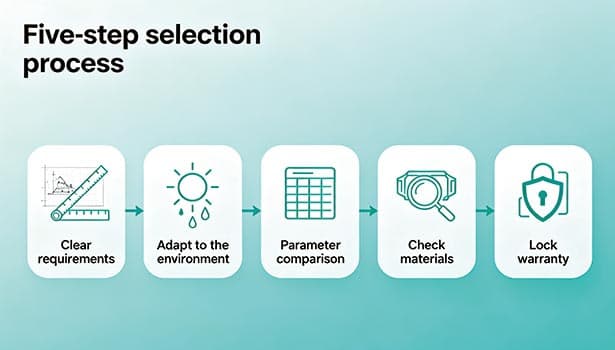
5 Steps Selection Process for Solar Street Lights
Clarify the Scene Requirements
Before looking at the product, clarify your own needs first. You can lock down the parameter range through three questions:
How large is the illuminated area? (Such as a 200-square-meter parking lot and a 500-meter rural road)
What brightness is required? (Such as meeting the requirements for pedestrian safety and vehicle passage)
How long should it be lit every day? (Such as 10 hours per night, from dark to dawn)
Take a 500-meter rural road as an example. Calculated at one light installed every 30 meters, a total of 17 lights are needed. The road is 3 meters wide and requires 1000 to 1500 meters per light. The lighting duration is 10 hours, combined with 4 hours of local sunlight. The core parameters can be determined as follows: LED 10W (130lm/w), battery panel 60W (monocrystalline silicon), and battery 24Ah (LiFePO4), to avoid being recommended by manufacturers as high-priced products with redundant parameters in the future.
Adapt to the Local Environment
Environmental differences in various regions can affect the performance of lighting fixtures, and the configuration needs to be adjusted accordingly.
Sunshine assessment
Check the average annual sunshine duration through the local meteorological bureau's official website or the "Global Sunshine Database", and use the data as the basis for selecting the power of the solar panels and the capacity of the batteries:
- In areas with abundant sunlight (≥5 hours per day) : The power of the solar panels can be appropriately reduced (such as from 80W to 60W), saving approximately 40 US dollars per panel.
- Areas with insufficient sunlight (≤3 hours per day) : The power of the solar panels needs to be increased (such as from 60W to 100W) to ensure sufficient charging.
Climate adaptation
- High-temperature areas (summer ≥35℃) : Select LED casings with heat dissipation holes and high-temperature resistant batteries to prevent battery swelling due to overheating.
- Low-temperature areas (winter ≤-10℃) : Confirm that the battery has the low-temperature starting certification. For LiFePO4 batteries, select the -20 ℃ compatible model.
- Rainy areas: Check whether the waterproof plugs at the bottom of the lights are tight and whether the battery compartment has drainage holes to prevent rainwater from seeping in and damaging the components.
Comparison of Focusing Parameters
Create a comparison table to directly link product parameters with prices, avoiding being attracted by a single low price
|
Product Model |
Energy Efficiency Ratio (lm/W) |
Battery Type |
Warranty of Core Components Meets Standards |
|
Model A |
90 |
Li-ion |
Whole machine within 1 year – Yes |
|
Model B |
120 |
LiFePO4 |
LED 3 years / Battery 3 years – Yes |
|
Model C |
130 |
LiFePO4 |
LED 5 years / Battery 5 years (optional) – Yes |
By comparison, it can be seen that although Model A has the lowest price, its energy efficiency ratio does not meet the standard, the battery type is poor, and the warranty period is short, making it a "trap product". The parameters of Model B meet the requirements and the price is moderate, making it the best solution for a low budget. Model C has better performance, but its price is much higher than the budget. It can be used as an alternative when the budget is slightly flexible.
Verify the Material and Craftsmanship
The quality of the product can be quickly judged through visual inspection and simple inquiries.
Visual inspection: The casing is free of burrs, the seams are uniform, there are sealing rubber rings at the interfaces, and the outer layer of the cable is protected by anti-aging rubber.
Detail confirmation: Ask whether the controller is equipped with overcharge and overdischarge protection (which can extend the battery life by 30%), and whether the battery compartment has an insulating layer to avoid the risk of short circuit.
Sample testing: If the purchase quantity is large (≥50 units), you can ask the manufacturer to send 1-2 samples to test the actual brightness and charging efficiency to avoid falling into a trap in bulk.
Lock in the Brand Warranty
Small and medium-sized professional brands are more cost-effective
The unit price of solar street lights from first-line brands (such as Philips and Osram) often exceeds 500 US dollars, with a relatively high premium. The quality of no-name products is not guaranteed. It is recommended to choose small and medium-sized brands that focus on outdoor lighting - these brands have been deeply involved in the niche market, have better quality control than no-name brands, and their unit prices are 30% to 40% lower than those of first-line brands, offering the highest cost performance.
The warranty terms should be clearly stated
When signing a purchase contract, the details of the quality guarantee should be put in writing to avoid the situation where oral promises cannot be fulfilled.
- Clearly define the warranty period for each component: "LED light source is guaranteed for 3 years, LiFePO4 battery for 3 years, and solar panel for 10 years."
- Agreed after-sales response: "Provide a solution within 72 hours after reporting a fault, and send out replacement parts within 15 days if a core component is damaged."
- Specify liability for breach of contract: "If the actual lifespan of the component is shorter than the warranty period, the manufacturer shall bear the cost of labor and materials for replacement."
3 Traps in Low-Budget Procurement of Solar Street lights
Trap 1: Passing off "High Power" as "High Brightness"
Some manufacturers claim "50W high-brightness LED", but the actual lumen count is only 4000lm (energy efficiency ratio 80lm/w), which is far lower than that of 30W and 130lm/w products (lumen 3900lm).
Response method: Request the manufacturer to provide the lumen test report of the LED. Directly calculate the energy efficiency ratio (lumen number ÷ power). Only when it is ≥110lm/w can it meet the requirements. Do not be misled by the simple "high power" label.
Trap 2: Disguising Ordinary Lithium Batteries as LiFePO4 Batteries
The unit price of ordinary lithium batteries is 20% to 30% lower than that of LiFePO4, but they have a short lifespan and poor safety. Some manufacturers vaguely label "lithium batteries" in their promotions, but actually pass them off as ordinary Li-ion batteries.
Solution: Check the model on the battery casing or the test report. The model of LiFePO4 batteries usually contains the "LFP" mark (such as LP12240). A third-party test report is required to confirm that the battery type is "lithium iron phosphate".
Trap 3: Ambiguity of Warranty Commitments
Common sales phrases include "The entire machine is guaranteed for 2 years", but in reality, only non-core components such as the casing and light post are guaranteed for 2 years, while vulnerable parts like leds and batteries are only guaranteed for 1 year. The cost of replacement in the later stage is extremely high.
Countermeasures: Request the manufacturer to provide a "Component warranty Detail", clearly stating the specific warranty period for core components such as leds, solar panels, batteries, and controllers, and include it in the purchase contract to avoid shirking responsibility later.
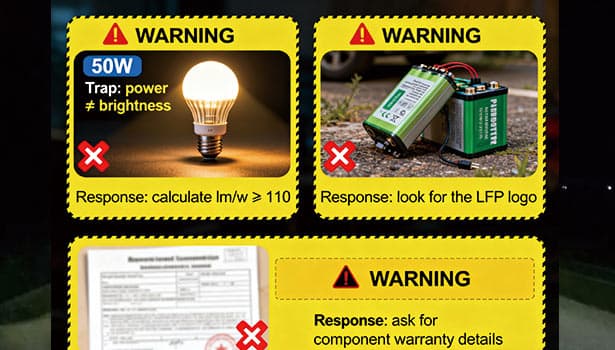
When choosing solar street lights with a low budget, the essence is to "abandon ineffective costs and focus on core values" - giving up premium items such as fancy appearances and redundant functions, and concentrating the budget on key aspects such as LED energy efficiency, panel efficiency, battery life, and warranty services. By clarifying requirements, matching parameters, verifying materials and locking in warranties, even with a limited budget, one can purchase solar street lights that have a long lifespan and stable performance, achieving the goal of "one-time purchase, years of peace of mind".

